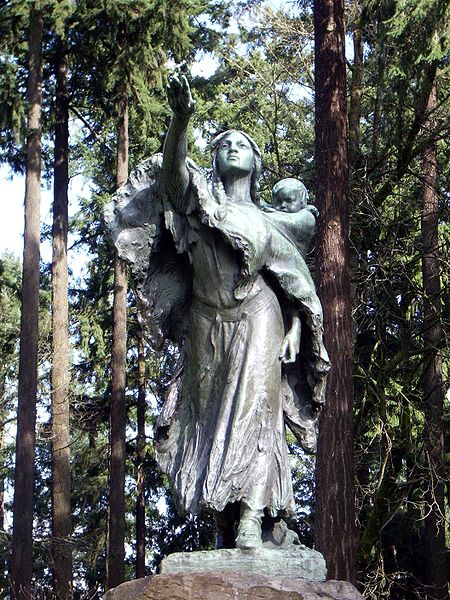History of unfree labor in the United States
The history of forced labor in the United States encompasses to all forms of unfree labor which have occurred within the present day borders of the United States through the modern era. "Unfree labor" is a generic or collective term for those work relations, in which people are employed against their will by the threat of destitution, detention, violence, lawful compulsion, or other extreme hardship to themselves or to members of their families.
Statue representing Sacagawea (ca. 1788–1812), a Lemhi Shoshone who was taken captive by the Hidatsa people and sold to Toussaint Charbonneau
Three Young White Men and a Black Woman (1632) by Christiaen van Couwenbergh.
A print depicting 'comfort women' embarking unwillingly for the Americas
Ad warning about the use of ice cream parlors to traffic women
Thirteenth Amendment to the United States Constitution
The Thirteenth Amendment to the United States Constitution abolished slavery and involuntary servitude, except as punishment for a crime. The amendment was passed by the Senate on April 8, 1864, by the House of Representatives on January 31, 1865, and ratified by the required 27 of the then 36 states on December 6, 1865, and proclaimed on December 18. It was the first of the three Reconstruction Amendments adopted following the American Civil War.
Abolitionist imagery focused on atrocities against slaves. (Photo of Peter, 1863.)
Abraham Lincoln
Representative James Mitchell Ashley proposed an amendment abolishing slavery in 1863.
Celebration erupts after the Thirteenth Amendment is passed by the House of Representatives.








